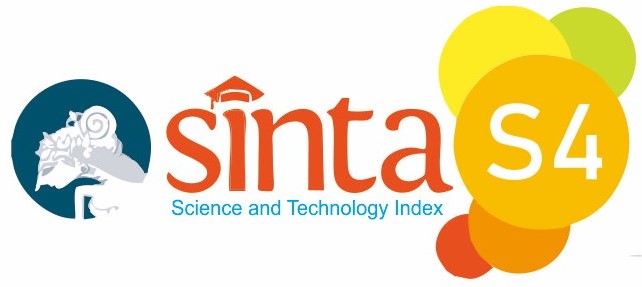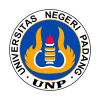PENGARUH MOTIVASI BELAJAR TERHADAP HASIL PEMBELAJARAN BUBUT: STUDI DI KALANGAN SISWA PROGRAM KEJURUAN TEKNIK PERMESINAN
Abstract
Penelitian ini menyelidiki korelasi antara prestasi akademis dalam penggunaan teknik permesinan bubut dan tingkat motivasi belajar yang dimiliki oleh para siswa. Metode penelitian ini melibatkan penerapan kuesioner, pencatatan nilai, dan dokumentasi. Dengan menggunakan pendekatan deskriptif korelasional dalam konteks penelitian kuantitatif, penelitian ini dilaksanakan di SMK Dhuafa Padang, dengan subjek penelitian yang terdiri dari para siswa kelas XI di Jurusan Teknik sedang mengeksplore beragam konsep dan praktik teknis Permesinan. Penelitian dilakukan pada bulan Februari dengan melibatkan partisipasi 21 siswa sebagai sampel penelitian. Hasil analisis data menunjukkan adanya korelasi yang kuat dan berarti antara tingkat motivasi belajar dan pencapaian akademis dalam Mata Pelajaran Bubut untuk siswa kelas XI Program Keahlian Teknik Permesinan di SMK Dhuafa Padang. Koefisien korelasi yang tercatat Motivasi belajar berkorelasi positif signifikan dengan prestasi belajar dalam Mata Pelajaran (r = 0,460, p < 0,05) sebesar 0,036. Studi ini memberikan sumbangan penting dalam memperluas pemahaman tentang peran krusial motivasi belajar dalam meningkatkan prestasi akademis siswa, khususnya dalam konteks pembelajaran teknik permesinan. Dengan menyadari keterkaitan yang penting antara motivasi belajar dan prestasi akademis, lembaga pendidikan dan para pendidik dapat menerapkan strategi yang lebih efisien Untuk meningkatkan semangat belajar para murid tujuan mencapai prestasi belajar yang lebih optimal dalam pelajaran teknik permesinan
References
Agustina, E. T., Wahyudin, A. Y., & Pratiwi, A. A. (2021). the Students’ Motivation and Academic Achievement At Tertiary Level: a Correlational Study. Journal of Arts and Education, 1(1), 29–38. https://doi.org/10.33365/jae.v1i1.33
Alita, D., Putra, A. D., & Darwis, D. (2021). Analysis of classic assumption test and multiple linear regression coefficient test for employee structural office recommendation. IJCCS (Indonesian Journal of Computing and Cybernetics Systems), 15(3), 295. https://doi.org/10.22146/ijccs.65586
Ariastuti, M. D., & Wahyudin, A. Y. (2022). Exploring Academic Performance and Learning Style of Undergraduate Students in English Education Program. Journal of English Language Teaching and Learning, 3(1), 67–73. https://doi.org/10.33365/jeltl.v3i1.1817
Bazdaric, K., Sverko, D., Salaric, I., Martinović, A., & Lucijanic, M. (2021). The abc of linear regression analysis: What every author and editor should know. European Science Editing, 47, 0–9. https://doi.org/10.3897/ese.2021.e63780
Chicco, D., Warrens, M. J., & Jurman, G. (2021). The coefficient of determination R-squared is more informative than SMAPE, MAE, MAPE, MSE and RMSE in regression analysis evaluation. PeerJ Computer Science, 7, 1–24. https://doi.org/10.7717/PEERJ-CS.623
Guest, G., Namey, E., & Chen, M. (2020). A simple method to assess and report thematic saturation in qualitative research. PLoS ONE, 15(5), 1–17. https://doi.org/10.1371/journal.pone.0232076
Hoare, Z., & Hoe, J. (2013). Understanding quantitative research: part 2. Nursing Standard (Royal College of Nursing (Great Britain) : 1987), 27(18), 48–55. https://doi.org/10.7748/ns2013.01.27.18.48.c9488
Ilham, R. N., Arliansyah, Juanda, R., Sinta, I., Multazam, M., & Syahputri, L. (2022). Application of Good Corporate Governance Principles in Improving Benefits of State-Owned Enterprise. International Journal of Economic, Business, Accounting, Agriculture Management and Sharia Administration (IJEBAS), 2(5), 761–772.
Indra, M., Munadi, S., & Widari, T. (2023). The Correlation of Motivation and Habit with Learning Outcomes in New Normal Era. Jurnal Iqra’ : Kajian Ilmu Pendidikan, 8(1), 51–70.
Kelter, R. (2020). Bayesian alternatives to null hypothesis significance testing in biomedical research: A non-technical introduction to Bayesian inference with JASP. BMC Medical Research Methodology, 20(1), 1–12. https://doi.org/10.1186/s12874-020-00980-6
Knief, U., & Forstmeier, W. (2021). Violating the normality assumption may be the lesser of two evils. Behavior Research Methods, 53(6), 2576–2590. https://doi.org/10.3758/s13428-021-01587-5
Kusuma, W. M., Sudira, P., Hasibuan, M. A., & Daryono, R. W. (2021). The Perceptions of Vocational School Students of Video Animation-Based Learning Media to Operate Lathes in Distance Learning. Journal of Education Technology, 5(2), 200. https://doi.org/10.23887/jet.v5i2.33139
Lee, H. J., & Hwang, Y. (2022). Technology-Enhanced Education through VR-Making and Metaverse-Linking to Foster Teacher Readiness and Sustainable Learning. Sustainability (Switzerland), 14(8). https://doi.org/10.3390/su14084786
Lee, S. W. (2022). Regression analysis for continuous independent variables in medical research: statistical standard and guideline of Life Cycle Committee. Life Cycle, 2, 1–8. https://doi.org/10.54724/lc.2022.e3
Li, Y., Li, X., Zhu, D., & Guo, H. (2020). Cultivation of the students’ critical thinking ability in numerical control machining course based on the virtual simulation system teaching method. IEEE Access, 8, 173584–173598. https://doi.org/10.1109/ACCESS.2020.3025079
Mcmillan, L., Johnson, T., Parker, F. M., Hunt, C. W., & Boyd, D. E. (2020). Improving Student Learning Outcomes through a Collaborative Higher Education Partnership. International Journal of Teaching and Learning in Higher Education 2020, 32(1), 117–124.
Mursid, R., Saragih, A. H., & Hartono, R. (2022). The Effect of the Blended Project-based Learning Model and Creative Thinking Ability on Engineering Students’ Learning Outcomes. International Journal of Education in Mathematics, Science and Technology, 10(1), 218–235. https://doi.org/10.46328/ijemst.2244
Muskhir, M., Luthfi, A., Julian, R., & Fortuna, A. (2023). Exploring iSpring Suite for Android-Based Interactive Instructional Media in Electrical Lighting Installation Subject. International Journal of Interactive Mobile Technologies (IJIM), 17(22), 67–84. https://doi.org/10.3991/ijim.v17i22.42625
Nurtanto, M., Pardjono, P., Widarto, W., & Ramdani, S. D. (2020). The effect of STEM-EDP in professional learning on automotive engineering competence in vocational high school. Journal for the Education of Gifted Young Scientists, 8(2), 633–649. https://doi.org/10.17478/JEGYS.645047
Peterson K, O. (2023). Munich Personal RePEc Archive The acceptable R-square in empirical modelling for social science research. Social Research Methodology and Publishing Results, 116496, 1–10.
Prasetya, F., Fortuna, A., Samala, A. D., Fajri, B. R., Efendi, F., & Nyamapfene, A. (2023). Effectiveness of Distance Learning Computer Numerical Control Based on Virtual Laboratory Using a Metaverse Platform to Improve Students’ Cognitive Ability and Practice Skills. International Journal of Interactive Mobile Technologies (IJIM), 17(24), 4–21. https://doi.org/10.3991/ijim.v17i24.45019
Qi, X., Yuan, Y., & Ren, T. (2023). The Construction Method of NC Lathe Programming and Machining Micro Course Resources. Journal of Theory and Practice of Social Science, 3(9), 31–39. https://doi.org/10.53469/jtpss.2023.03(09).05
Rahmadi, I. F., Lavicza, Z., Arkün Kocadere, S., Houghton, T., & Spector, J. M. (2024). Investigating the design, participation and experience of teaching and learning facilitated by user-generated microgames on an open educational platform. Educational Technology Research and Development, 0123456789. https://doi.org/10.1007/s11423-024-10359-9
Rahman, M. M., Tabash, M. I., Salamzadeh, A., Abduli, S., & Rahaman, M. S. (2022). Sampling Techniques (Probability) for Quantitative Social Science Researchers: A Conceptual Guidelines with Examples. SEEU Review, 17(1), 42–51. https://doi.org/10.2478/seeur-2022-0023
Sudarsono, B., Tentama, F., Mulasari, S. A., Sukesi, T. W., Sulistyawati, S., Ghozali, F. A., Yuliansyah, H., Nafiati, L., & Sofyan, H. (2022). Development of Integrated Project-based (PjBL-T) model to improve work readiness of vocational high school students. Jurnal Pendidikan Vokasi, 12(3), 222–235. https://doi.org/10.21831/jpv.v12i3.53158
Surucu, L., & Maslakci, A. (2020). Validity and Reliability in Quantitative Research. Business & Management Studies: An International Journal, 8(3), 2694–2726. https://doi.org/10.15295/bmij.v8i3.1540
Waskito, Fortuna, A., Prasetya, F., Wulansari, R. E., Nabawi, R. A., & Luthfi, A. (2024). Integration of Mobile Augmented Reality Applications for Engineering Mechanics Learning with Interacting 3D Objects in Engineering Education. International Journal of Information and Education Technology, 14(3), 354–361. https://doi.org/10.18178/ijiet.2024.14.3.2057
Submitted
Copyright (c) 2024 Jurnal Vokasi Mekanika

This work is licensed under a Creative Commons Attribution 4.0 International License.








.svg_.png)


